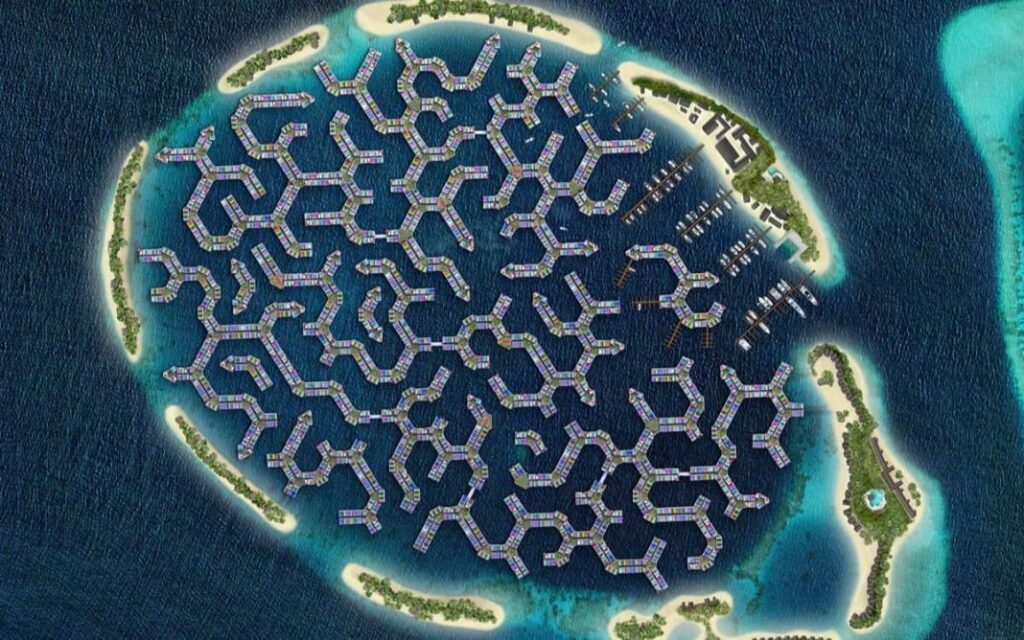The Maldives Floating City project
The Maldives is an island country with an elevation of under two meters on average. As a result, they have a good cause to be concerned about the rise in sea levels.
For this reason, the Maldives has been searching for a solution to a specific future issue for years. It appears that they have decided to float on the water’s surface, so they have begun construction on a floating city.
The first phase of construction, which will start the following year, will involve the construction of 5,000 homes. These homes will be constructed in a large lagoon five speedboats minutes from Male, the Maldives’ capital. The 5,000 apartments will be locally constructed in accordance with Dutch engineering standards, connected to one another, and firmly anchored to the lagoon’s bottom.
The development of recreational facilities, including a golf course, is scheduled for the project’s later phases, making the Maldives Floating City the first authentic floating city ever built.
Divers’ importance in the Maldives is further demonstrated by the fact that the floating city’s designers took divers into consideration when creating it. As a result, everything underwater is adequately marked and secured so that divers can dive beneath it without encountering any difficulties.
Maldives Sea Level Rise
The Maldives is a low-lying archipelago nation located in the Indian Ocean. It is made up of 26 atolls, which are groups of coral islands that are formed around a central lagoon. The country has a total land area of just 298 square kilometers and an average elevation of just 1.5 meters above sea level, making it one of the lowest-lying countries in the world.
Sea levels have been rising globally for the past century due to a combination of factors, including thermal expansion caused by warming oceans and melting ice from glaciers and ice sheets. The Maldives is particularly vulnerable to sea level rise because of its low elevation and its location in a region that is expected to experience more rapid sea level rise due to climate change.
There are several potential impacts of sea level rise on the Maldives. These include increased flooding and erosion, which can threaten infrastructure, agriculture, and freshwater resources; loss of coastal habitats and biodiversity; and increased risk of saltwater intrusion into freshwater aquifers. The Maldives is working to adapt to the impacts of sea level rise through a variety of measures, including building sea walls and other infrastructure to protect against flooding and investing in renewable energy to reduce greenhouse gas emissions and slow the rate of global warming.
Thank you for reading!
